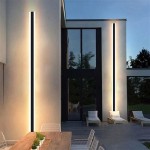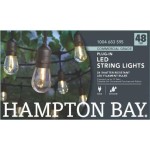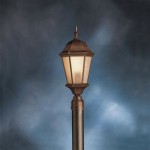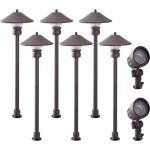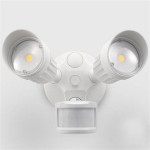What Are the Best Outdoor Solar Lights?
Outdoor solar lights provide an energy-efficient and aesthetically pleasing solution for illuminating gardens, walkways, patios, and other outdoor spaces. These lights harness solar energy during the day and convert it into electricity to power the lights at night. With a vast range of styles, functionalities, and price points available, selecting the best outdoor solar lights requires careful consideration of various factors. This article will explore essential aspects and categories to assist in making informed decisions based on individual needs and preferences.
Understanding the Components of Solar Lights
The core components of outdoor solar lights generally consist of the following:
Solar Panel: This component captures sunlight and converts it into direct current (DC) electricity. The efficiency of the solar panel is crucial, as it determines how quickly the battery charges and how much energy is stored. Polycrystalline and monocrystalline panels are the two primary types. Monocrystalline panels are generally more efficient and durable but also more expensive. Polycrystalline panels are more affordable but may have slightly lower efficiency.
Battery: Solar lights utilize rechargeable batteries to store the energy generated by the solar panel. Common battery types include nickel-cadmium (NiCd), nickel-metal hydride (NiMH), and lithium-ion (Li-ion). Lithium-ion batteries are increasingly popular due to their higher energy density, longer lifespan, and reduced environmental impact. The battery capacity, measured in milliampere-hours (mAh), dictates how long the light will operate on a full charge.
LED (Light Emitting Diode): LEDs are the light source in solar lights, known for their energy efficiency, long lifespan, and durability. They consume significantly less power than traditional incandescent bulbs and offer a variety of color temperatures, ranging from warm white to cool white. The brightness of the LED is measured in lumens, with higher lumen values indicating brighter light.
Controller Circuit: This electronic component manages the charging and discharging of the battery, ensuring optimal performance and preventing overcharging or deep discharging, which can damage the battery. It also controls the light's on/off function, often employing a light sensor to automatically activate the light at dusk and deactivate it at dawn.
Housing and Lens: The housing protects the internal components from the elements, while the lens focuses and diffuses the light. Materials such as stainless steel, aluminum, and durable plastics are commonly used for the housing, providing weather resistance and longevity. The lens material and design influence the light's distribution and aesthetic appeal.
Types of Outdoor Solar Lights
Outdoor solar lights are available in a wide variety of styles, each designed for specific applications and aesthetic preferences. Here are some of the most common types:
Path Lights: These lights are designed to illuminate walkways, driveways, and garden paths, providing safety and enhancing the landscape's appearance. They typically feature a stake that is inserted into the ground, and their light output is generally diffused to provide a soft, even illumination. Path lights vary in height, style, and material, allowing for customization to match the surrounding environment.
Spotlights: Solar spotlights are designed to focus a concentrated beam of light on specific features, such as trees, shrubs, or architectural details. They are often adjustable, allowing users to direct the light where it is needed most. Spotlights typically have higher lumen outputs than path lights and may feature adjustable brightness settings.
Flood Lights: Solar flood lights provide broad illumination for larger areas, such as patios, decks, or security perimeters. They typically have a wide beam angle and high lumen output, providing ample light for safety and visibility. Some flood lights feature motion sensors, activating the light only when movement is detected, conserving energy and enhancing security.
String Lights: Solar string lights add a decorative touch to outdoor spaces, creating a festive or romantic ambiance. They consist of a series of small LED lights strung along a flexible cord. String lights can be draped over trees, fences, or patios, adding visual interest and soft illumination. They are available in various bulb shapes, colors, and lengths.
Lanterns: Solar lanterns combine functionality and aesthetics, providing both illumination and decorative appeal. They often feature intricate designs and can be hung from trees, placed on tables, or used as pathway markers. Solar lanterns come in various styles, from traditional to modern, and can be made from materials such as metal, wood, or plastic.
Wall Lights: Solar wall lights are mounted on walls or fences, providing security lighting and enhancing the architectural features of a building. They can be used to illuminate doorways, garages, or patios. Wall lights are available in various styles, including sconces, spotlights, and decorative designs. They often feature dusk-to-dawn sensors for automatic operation.
Deck Lights: Solar deck lights are designed to be installed on decks or railings, providing ambient lighting and enhancing safety. They are typically low-profile and durable, able to withstand the elements. Deck lights can be mounted flush with the deck surface or attached to railings, providing a subtle and elegant lighting solution.
Factors to Consider When Choosing Solar Lights
Selecting the best outdoor solar lights involves evaluating several factors to ensure they meet specific needs and preferences:
Brightness (Lumens): The brightness of a solar light is measured in lumens. Consider the intended use of the light when determining the required lumen output. Path lights typically require lower lumens (e.g., 10-20 lumens) for subtle illumination, while flood lights and spotlights may require higher lumens (e.g., 200-800 lumens) for brighter, more focused lighting. The size of the area to be illuminated also influences the required lumen output.
Battery Capacity (mAh): The battery capacity determines how long the light will operate on a full charge. Higher mAh ratings indicate longer runtimes. Consider the amount of sunlight the light will receive and the desired runtime when selecting a battery capacity. For areas with limited sunlight, a higher battery capacity may be necessary to ensure adequate illumination throughout the night. The type of battery (Li-ion, NiMH, NiCd) also affects its lifespan and performance.
Solar Panel Efficiency: The efficiency of the solar panel affects how quickly the battery charges and how much energy is stored. Monocrystalline panels are generally more efficient than polycrystalline panels but are also more expensive. Consider the amount of sunlight the light will receive when selecting a solar panel. In areas with limited sunlight, a more efficient panel may be necessary to ensure adequate charging.
Weather Resistance: Outdoor solar lights should be able to withstand the elements, including rain, snow, and extreme temperatures. Look for lights with an IP (Ingress Protection) rating that indicates their resistance to water and dust. A higher IP rating indicates greater protection. Common ratings for outdoor lights include IP44 (splash-proof) and IP65 (water-resistant). The materials used in the housing and lens should also be durable and weather-resistant.
Material and Durability: The materials used in the construction of solar lights affect their durability and lifespan. Stainless steel and aluminum are durable and rust-resistant options, while durable plastics are more affordable. Consider the environment in which the lights will be used when selecting materials. Coastal areas may require materials that are resistant to salt corrosion. The overall build quality and construction should be robust enough to withstand outdoor conditions.
Light Color Temperature: The color temperature of the light affects the ambiance and visual appeal of the illuminated area. Warm white light (2700-3000K) creates a cozy and inviting atmosphere, while cool white light (4000-5000K) provides brighter and more focused illumination. Consider the intended use of the light and personal preferences when selecting a color temperature. Some solar lights offer adjustable color temperatures, allowing users to customize the lighting to their liking.
Style and Design: Solar lights are available in a wide range of styles and designs, allowing users to match their aesthetic preferences and complement the surrounding environment. Consider the overall design of the outdoor space and select lights that enhance its visual appeal. From traditional lanterns to modern spotlights, there are options to suit every taste. The finish, shape, and size of the lights should also be considered.
Installation and Maintenance: Consider the ease of installation and maintenance when selecting solar lights. Some lights require simple staking, while others may require more complex mounting. Ensure that the lights can be easily cleaned and maintained to prolong their lifespan. Check for replaceable batteries, as this can extend the life of the light. Some lights may also require periodic cleaning of the solar panel to maintain optimal charging efficiency.
Motion Sensor and Automatic Operation: Many solar lights feature motion sensors and automatic on/off functions, enhancing convenience and security. Motion sensor lights activate only when movement is detected, conserving energy and providing added security. Automatic on/off functions use light sensors to turn the lights on at dusk and off at dawn, eliminating the need for manual operation. Consider these features when selecting lights for security or convenience purposes.
Price and Warranty: Solar lights vary in price depending on their features, quality, and brand. Consider the budget and balance it with the desired features and quality. Look for lights with a warranty, as this provides assurance of their quality and durability. Compare prices and reviews from different brands and retailers to find the best value for the money. A longer warranty period typically indicates greater confidence in the product's reliability.

5 Best Outdoor Solar Lights Of 2024 Reviewed

The Best Solar Path Lights Of 2024 According To Testing Bob Vila

The Best Solar Garden Lights Of 2024 Popular Science

Beau Jardin 8 Pack Solar Powered Lights Led Path Garden Light Black Com

Best Solar Light Outdoor Led Filament Style Path Lights In Black Weatherproof Metal 10x Brightness 3000k 4 Pack Com

Outdoor Patio Wall Light Best Solar Lights Depot

The Best Solar Landscape Lights Of 2024 Popular Science

6 Best Solar Lanterns Of 2024 Reviewed

The Best Solar Garden Lights Of 2024 Digital Trends

Garden Outdoor Solar Powered Pathway Shed Wall Led Landscape Fence Lighting Best Lights China Light Made In Com

